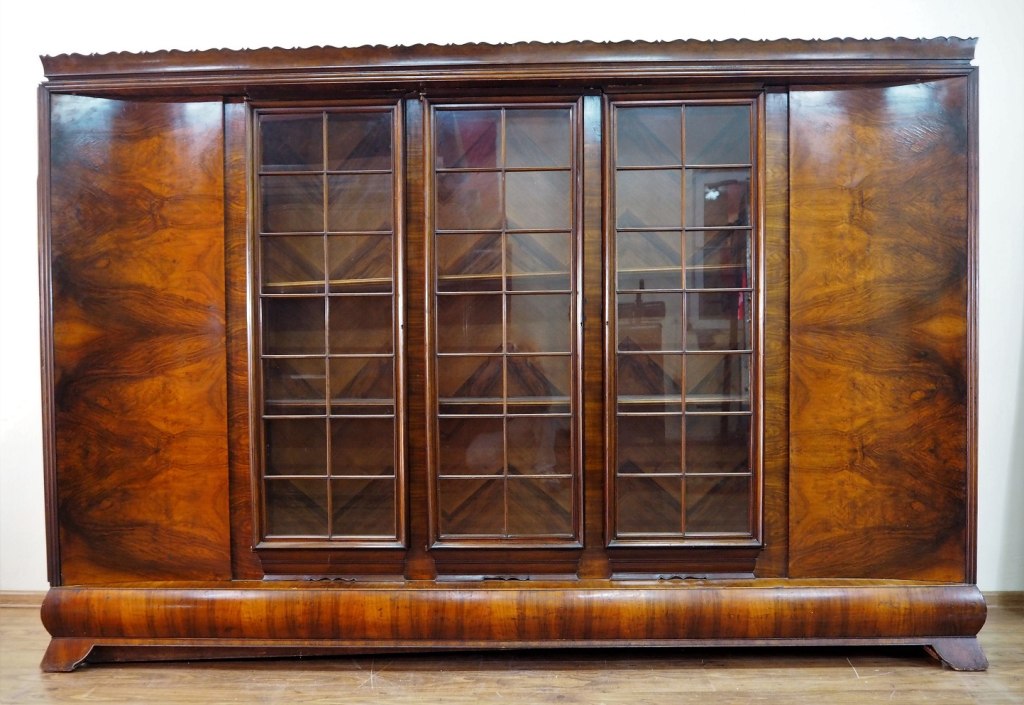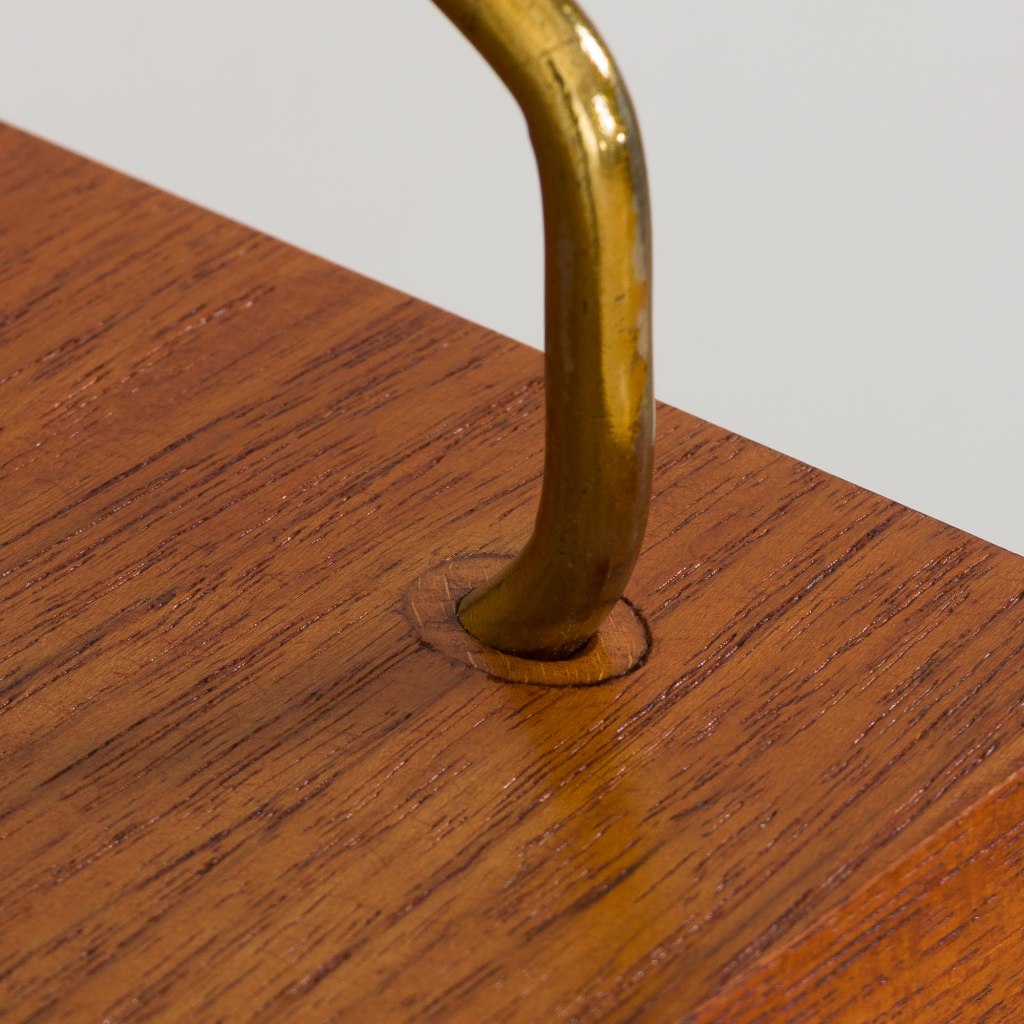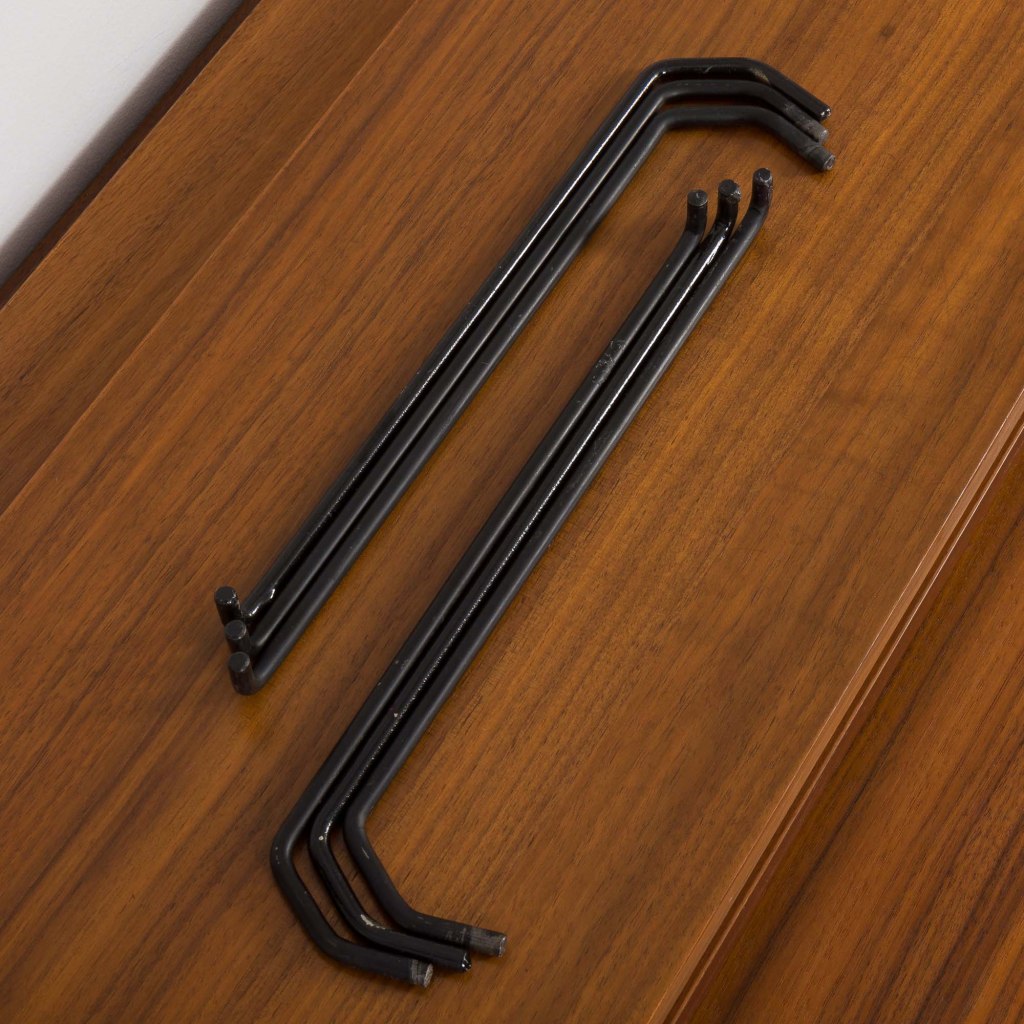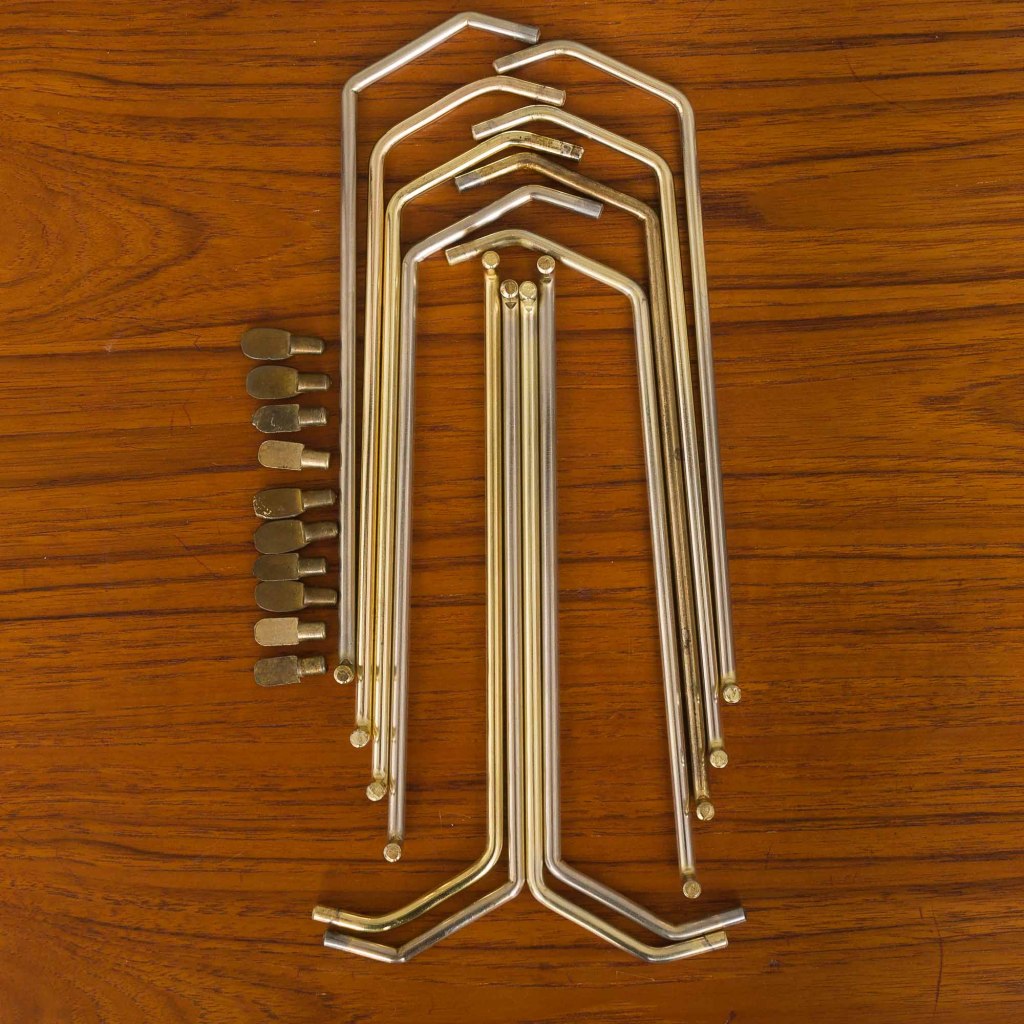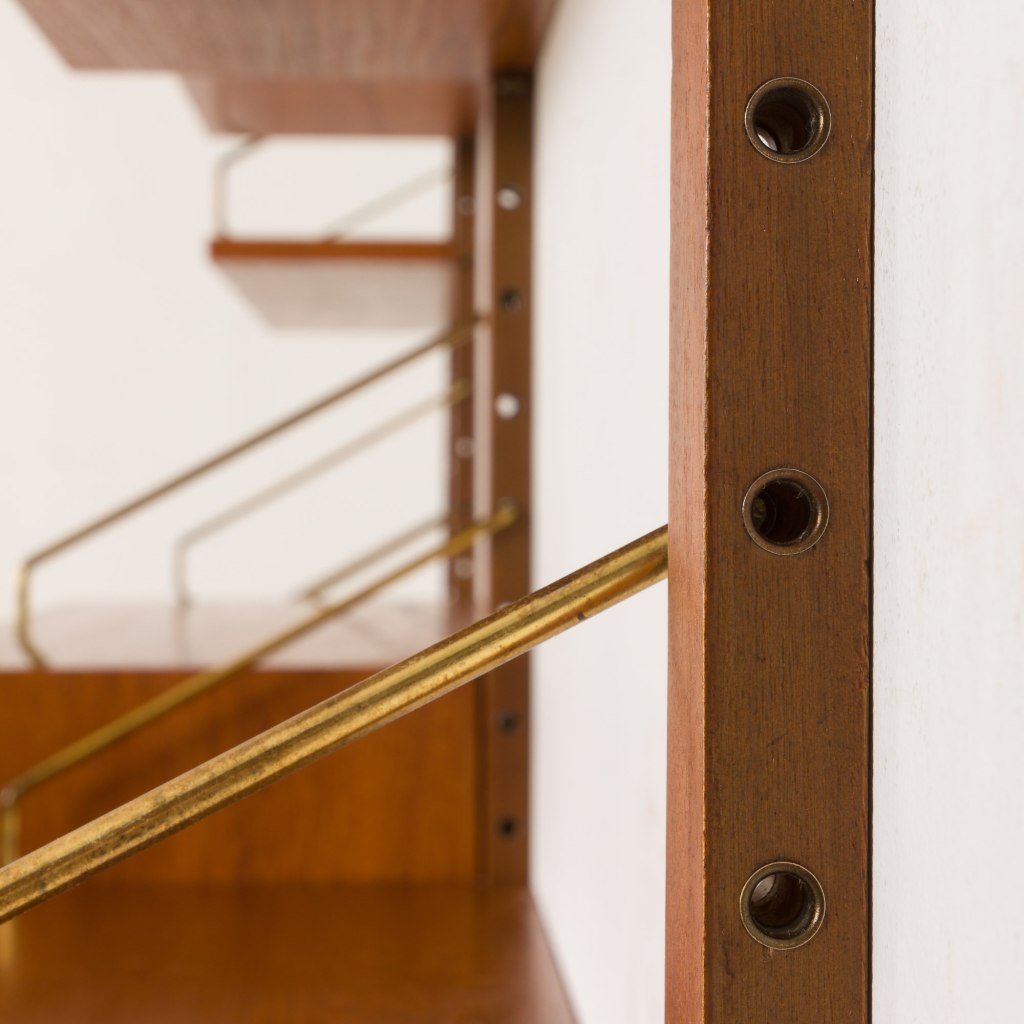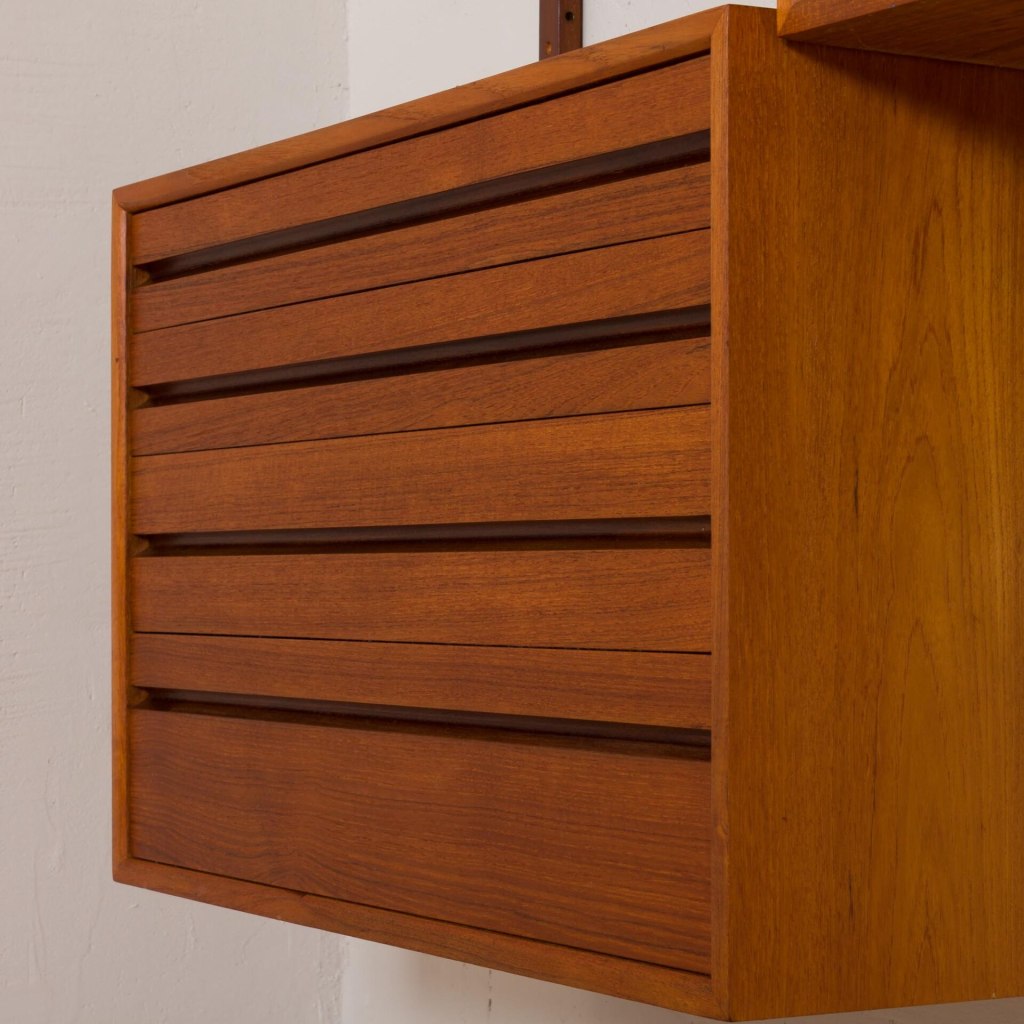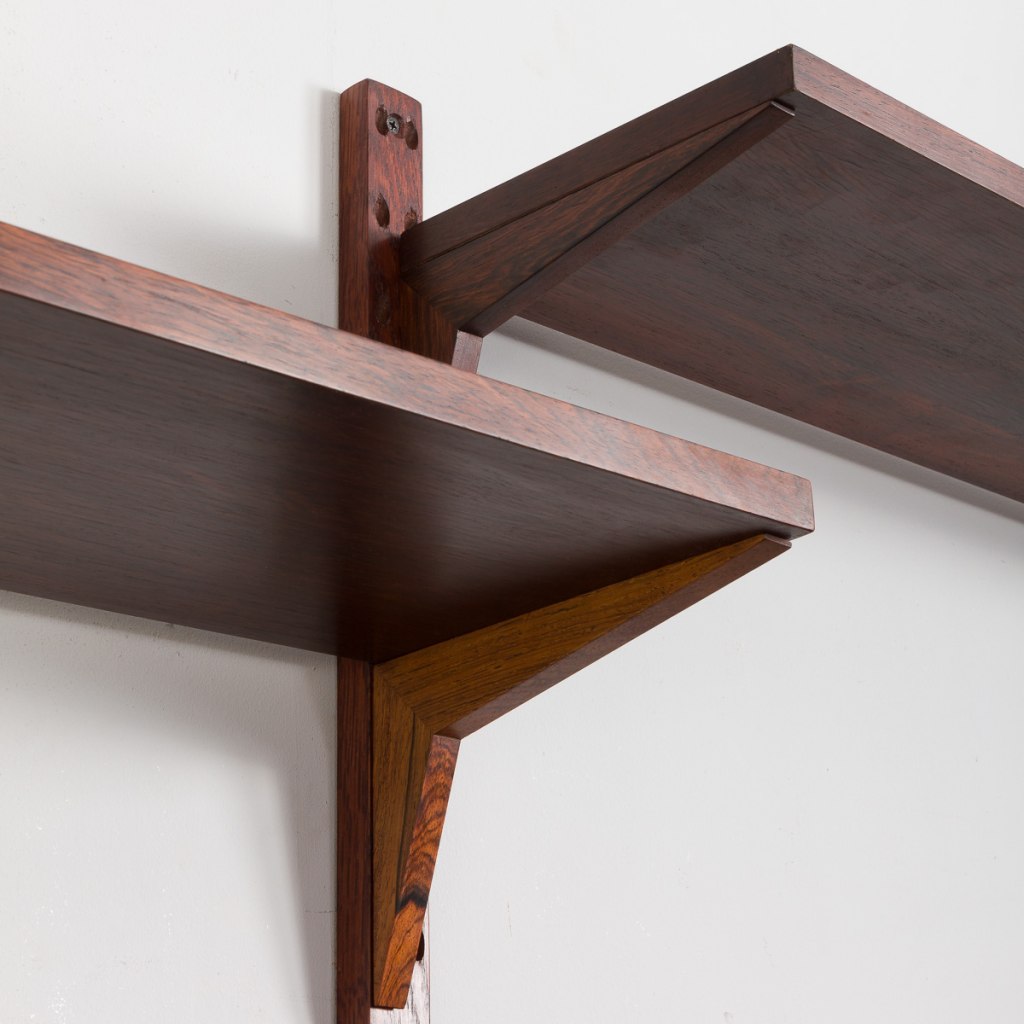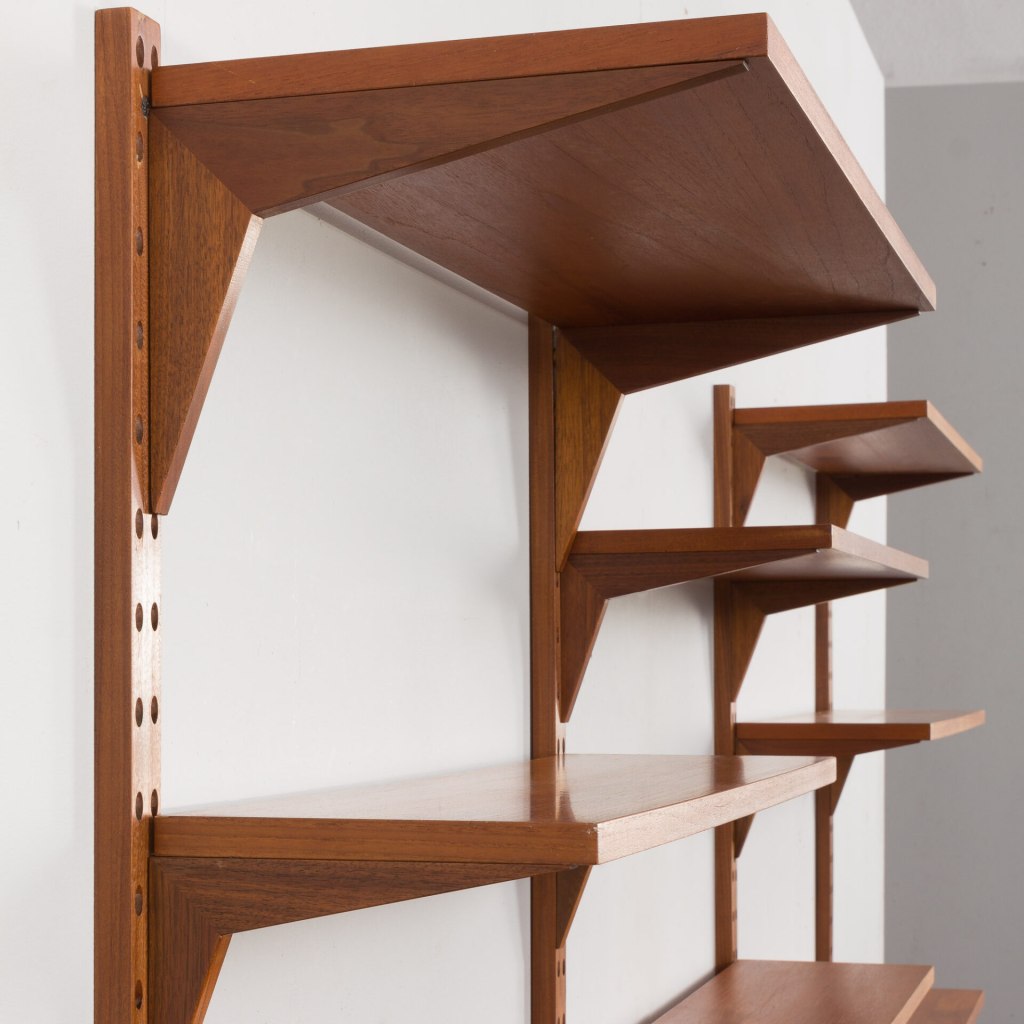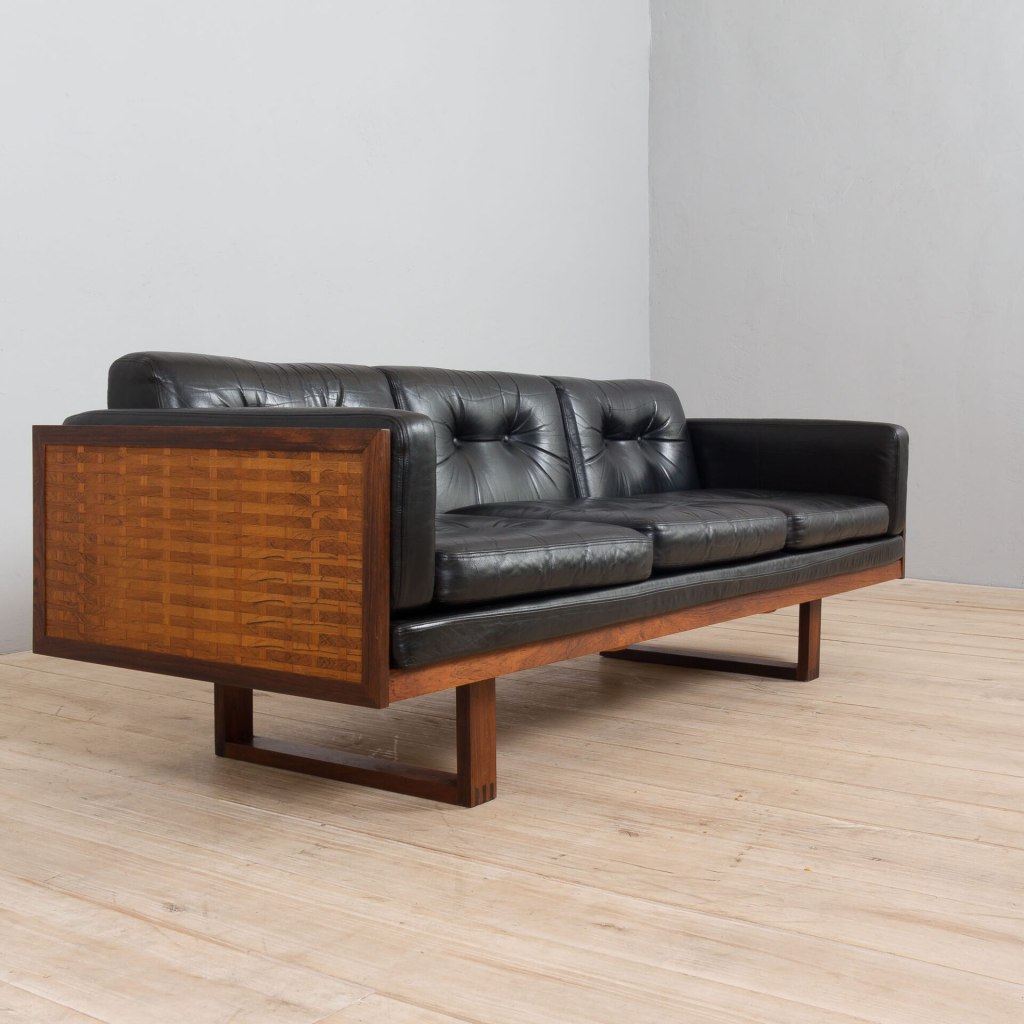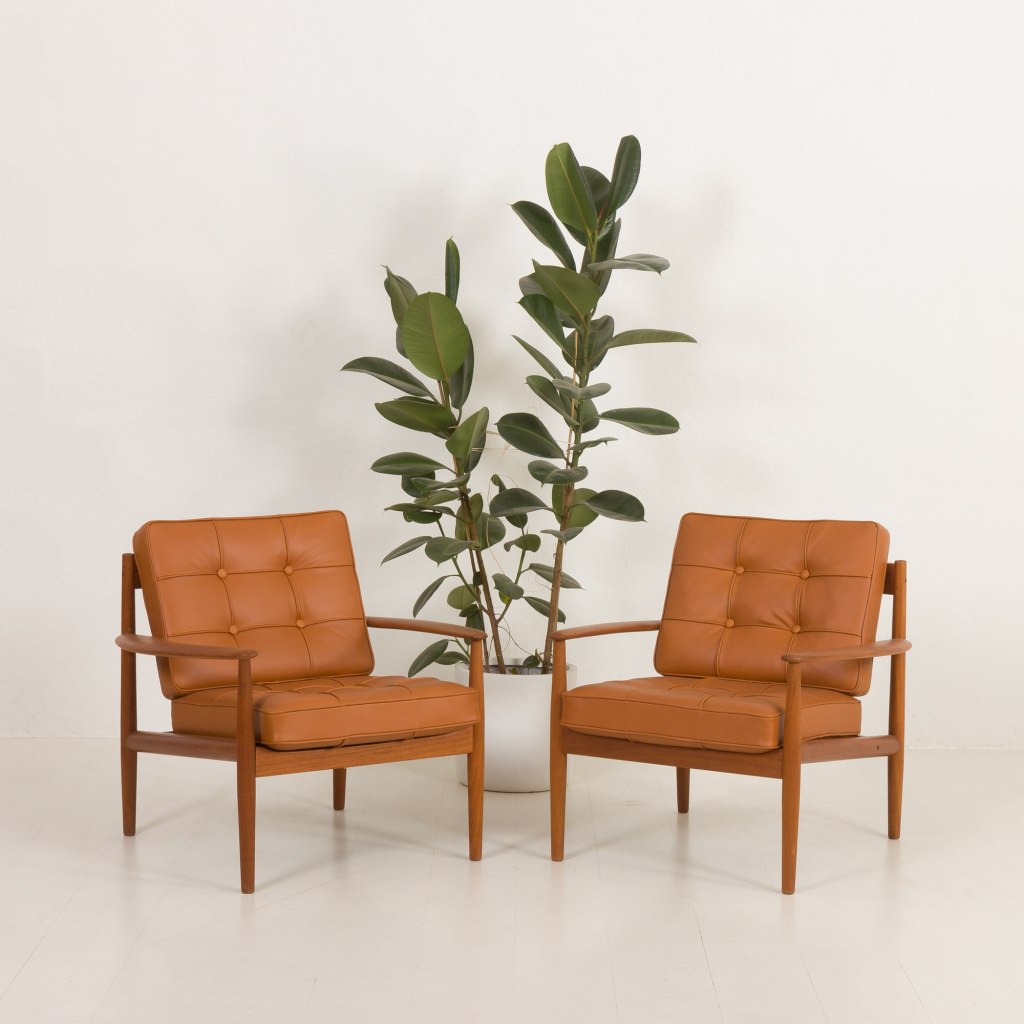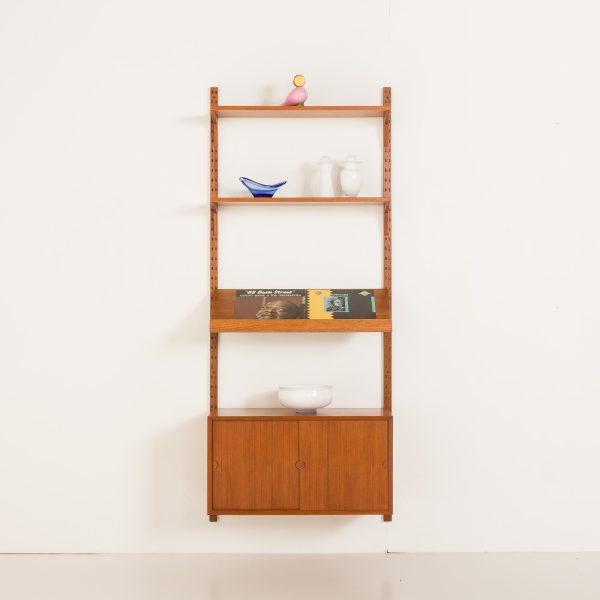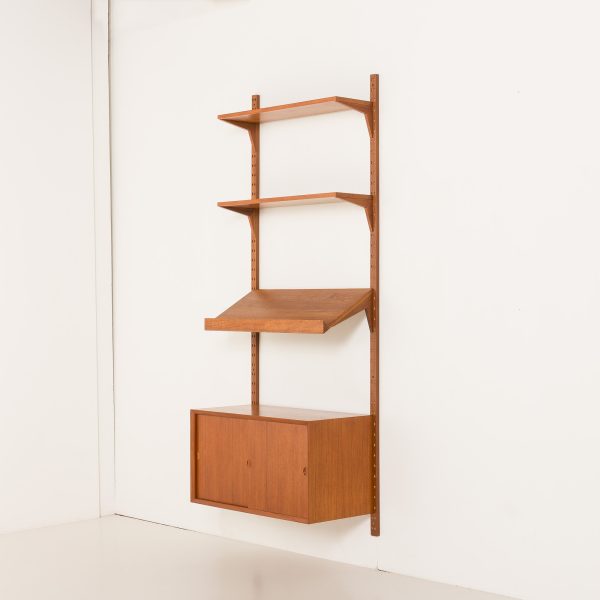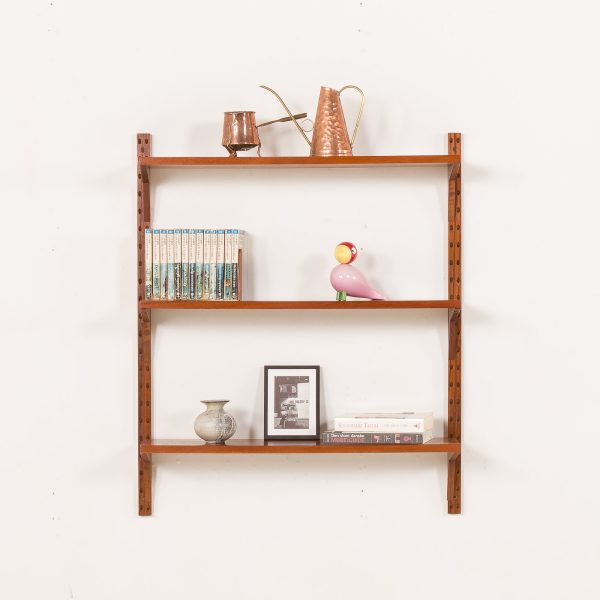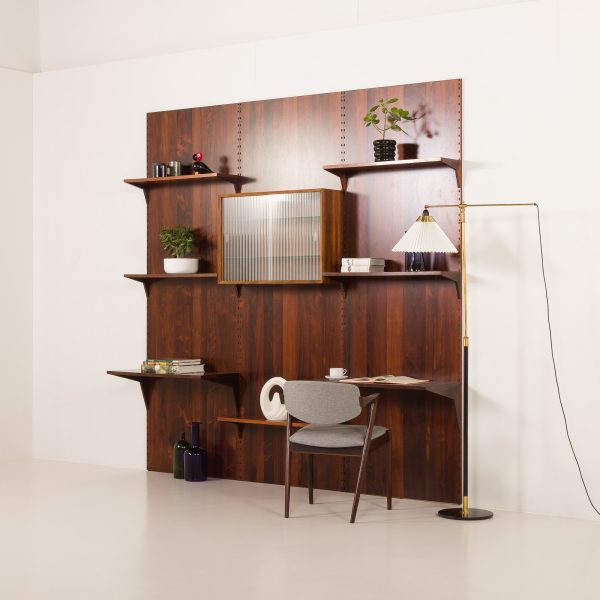
S'agit-il d'un authentique Cadovius ? Comment reconnaître les meubles hauts originaux conçus par Poul Cadovius et ce qui les rendait si spéciaux ?
Cadovius shelving units have always been popular. In recent years, however, there has been an enormous surge in interest and many inquiries about them.
Frequently asked questions include:
- Is this definitely an original Cadovius?
- Is this a Cado?
I’d like to concisely explain how to easily identify Cadovius furniture through several details and provide some history about this ingenious Danish designer.
Poul Cadovius designed his revolutionary Royal System wall unit in 1948, naming his first company after it. The project was immediately successful due to several factors:
Revolutionary features of Cadovius wall systems:
First, their lightness and versatility—they were suitable for apartments, kitchens, living rooms, hallways, as well as offices. They were modular, could be divided into any sections, installed in a single room or in several. If a shelving unit proved too small, additional sections could easily be added.
Second, Cadovius allowed furniture to “climb up the wall.” Nowadays, this doesn’t seem so revolutionary, but over 70 years ago, it was groundbreaking. Cadovius observed that we only used “the bottom part of the cube we live in,” with furniture arranged on the floor and only art or mirrors hanging on walls. What if the walls could be utilized as storage space? This idea gained popularity in the 1950s when, after World War II, major housing projects were built to accommodate Europe’s rapidly growing population. However, apartments weren’t large, making wall-mounted cabinets, consoles, or desks an ideal solution. Replacing massive libraries with a few shelves also became an excellent idea.
Third, the shelves themselves. Cadovius freed bookshelves from their heavy, formal appearance. Libraries had always been substantial pieces of furniture, necessary because homes contained numerous books—not just among bibliophiles but ordinary people too. Everything was printed—guides, manuals, photo albums. Imagine all the content of Google Maps and Facebook in print form, plus magazines, newsletters, and personal notes. Offices had even more. Such a massive, heavy bookshelf took up significant space, was difficult to transport, and strongly defined the interior.
Consider slightly older art deco bookshelves. Despite their beautiful form, they weighed nearly 100 kg. Now, envision the Royal System shelves, weighing just 1 kg and mountable almost anywhere.
Photos Source: Allegro.pl (archive)
Poul Cadovius and the craftsmanship of his furniture
Born in 1911, Poul Cadovius was the son of a carpenter and trained as a saddler and upholsterer. This background significantly influenced his familiarity with materials used later in furniture design. The revolutionary aspect of his 1948 system was the shelf mounting method.
Shelves made of plywood featured solid wooden dowels embedded into them, into which brass-plated steel brackets were inserted. This method was difficult to manufacture. Inferior copies insert brackets directly into the plywood, eventually damaging the veneer and ruining the shelf. To identify an original Cadovius, pay close attention to this element—observe how perfectly everything fits together.
The brackets were brass-plated, a wise solution because pure brass would deform under such bending. Instead, galvanized steel was used—harder but maintaining a more exclusive look thanks to the brass coating. Over time, this thin coating oxidizes and wears, so brackets often appear worn. A variant with metal brackets painted black also exists.
These shelves fit onto rails, which initially had metal inserts, though later versions often lacked these. Notice the hole spacing—it’s 4.5 cm.
Cabinets were mounted even more cleverly. They featured rear brackets sliding onto pegs protruding from the rails—a gravity-based, straightforward, user-friendly solution.
Regarding craftsmanship, note how wooden elements were constructed. Cabinets had 45° joints with additional small internal grooves—purely aesthetic, visually reducing cabinet wall thickness. Drawers were dovetailed. Typically, black plywood backed the cabinets, though materials varied over decades—never particleboard.
This revolutionary system quickly achieved international success, highlighting a massive demand for modular furniture systems and popularizing Danish design worldwide.
In the late 1960s, Cadovius acquired the large furniture factory France and Sons, renaming it Cado, mass-producing systems under this name. Distinguishing “real Cadovius” becomes easier with these insights. The distinction between “Cadovius” and “Cado” systems is more complex. Cadovius designed and patented two types of wall systems: ROYAL SYSTEM® (1948) and SYSTEM CADO® (1950). Though nearly identical, Cadovius introduced various mounting methods over time, including wooden brackets and rear panels, consistently driven by the revolutionary idea of moving storage from floors to walls.
Interestingly, producing brackets today from solid rosewood or teak seems extremely expensive. Given Cadovius’ precise workmanship and premium materials, making accurate copies is economically impractical. Poor copies are easily identifiable (especially after reading this text).
Cadovius also designed freestanding shelving systems, charming and easily movable—ideal for those unable to drill holes in apartment walls.
Cadovius drew inspiration for tension systems from Italian aesthetics, similar to earlier works by Franco Albini and other architects. Yet, Cadovius adapted them to his style, making his shelves universally adaptable and easy to rearrange.
Cado wasn’t limited to shelves; Cadovius patented over 400 furniture designs. The Governor sofa, featuring characteristic teak weaving also found on Cado cabinets, became his most renowned piece.
Upon acquiring France and Sons, Cadovius also obtained production rights to furniture by other prominent Danish designers, including Grete Jalk, Arne Vodder, and Ole Wanscher. Below is a pair of armchairs designed by Grete Jalk, known to design lovers as a France & Søn production. However, our pair was made by Cado, which means they date from the late 1960s or even the 1970s.
In the 1970s, Cadovius became Denmark’s largest furniture manufacturer, exporting to over 40 countries with factories in eight nations. In Norway, Cadovius’s system featured brass inserts instead of wooden dowels—a durable solution compatible with both systems.
Cadovius shelves remain immensely popular today, maintaining excellent condition even after 60 years, testifying to Cadovius’s commitment to quality. Although never cheap, these shelves became synonymous with elegance and sophistication over decades. The minimalist design has proven timeless, its simplicity still impressing.
Currently, most shelves sell to California, where in the 1960s and ’70s, Cado shelves epitomized modernity among California’s elite, becoming integral to the state’s architectural DNA.
Poul Cadovius shelves — and more — available to view here: https://futureantiques.eu/shelves-wall-units/

Adam Krzemiński – CEO
Adam Krzemiński graduated with a degree in law, but his passion for archaeology led him to the discovery and restoration of furniture, which he treats as historical artifacts. He began by restoring antiques in Europe and the United States, but soon focused his attention on 20th-century pieces. In 2014, he founded Futureantiques—a company specializing in mid-century modern furniture and lighting. To date, items from the Futureantiques collection have found new homes with clients in over 27 countries, 400 cities, and across four continents.

